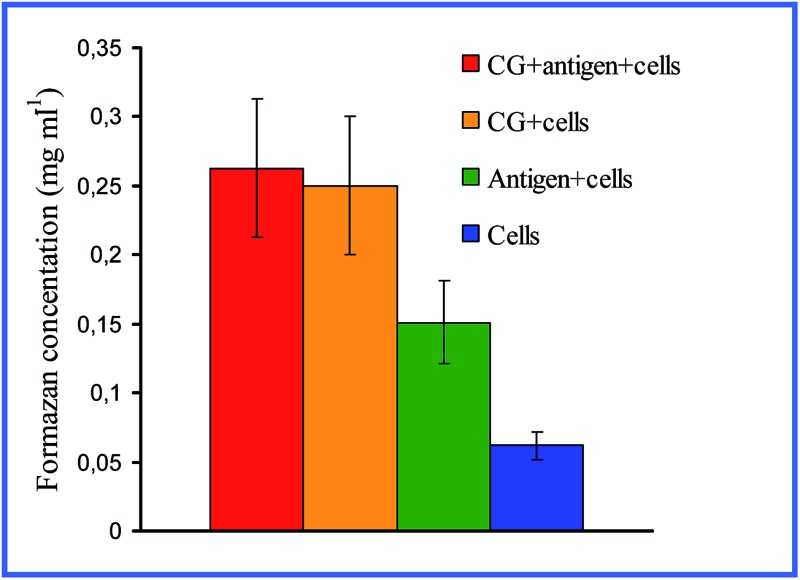- Record: found
- Abstract: found
- Article: found
Immunological properties of gold nanoparticles

Read this article at
Abstract

Abstract
In the past decade, gold nanoparticles have attracted strong interest from the nanobiotechnological community owing to the significant progress made in robust and easy-to-make synthesis technologies, in surface functionalization, and in promising biomedical applications. These include bioimaging, gene diagnostics, analytical sensing, photothermal treatment of tumors, and targeted delivery of various biomolecular and chemical cargos. For the last-named application, gold nanoparticles should be properly fabricated to deliver the cargo into the targeted cells through effective endocytosis. In this review, we discuss recent progress in understanding the selective penetration of gold nanoparticles into immune cells. The interaction of gold nanoparticles with immune cell receptors is discussed. As distinct from other published reviews, we present a summary of the immunological properties of gold nanoparticles. This review also summarizes what is known about the application of gold nanoparticles as an antigen carrier and adjuvant in immunization for the preparation of antibodies in vivo. For each of the above topics, the basic principles, recent advances, and current challenges are discussed. Thus, this review presents a detailed analysis of data on interaction of gold nanoparticles with immune cells. Emphasis is placed on the systematization of data over production of antibodies by using gold nanoparticles and adjuvant properties of gold nanoparticles. Specifically, we start our discussion with current data on interaction of various gold nanoparticles with immune cells. The next section describes existing technologies to improve production of antibodies in vivo by using gold nanoparticles conjugated with specific ligands. Finally, we describe what is known about adjuvant properties of bare gold or functionalized nanoparticles. In the Conclusion section, we present a short summary of reported data and some challenges and perspectives.
Related collections
Most cited references211
- Record: found
- Abstract: found
- Article: not found
Nanoparticle-induced unfolding of fibrinogen promotes Mac-1 receptor activation and inflammation.
- Record: found
- Abstract: found
- Article: not found
Interaction of gold nanoparticles with common human blood proteins.
- Record: found
- Abstract: found
- Article: not found